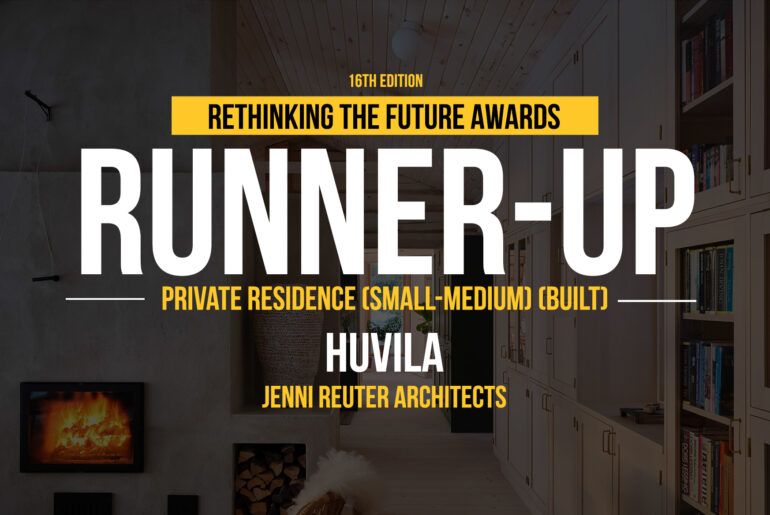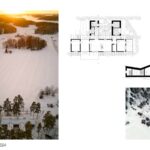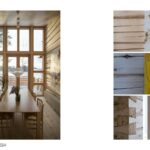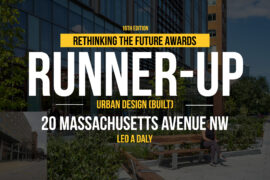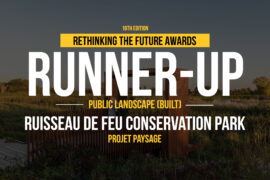The task was to design an environmentally friendly building, gentle to the senses. An architecture that would embrace a comfortable life with simple and genuine materials. A healthy home for a client who is sensitive to certain chemicals.
Rethinking The Future Awards 2024
Second Award | Private Residence (Small-Medium) (Built)
Project Name: Huvila
Category: Private Residence (Small-Medium) (Built)
Studio Name: Jenni Reuter Architects
Design Team:
Architect: Jenni Reuter / Jenni Reuter Architects
Structural engineer: Mika Widgren / Rakennussuunnittelu Widgren
Electrical engineer: Niklas Rosenblad with expertise from Reijo Ekman
HVAC engineer: Antti Artamo / LVI- Suunnittelu Suhde Oy
The specialists from the contractor firm Restart have been involved in the design process from the very start to the finalised building. The beautifully executed house is the result of this fruitful collaboration.
Area: 160 m2
Year: 2024
Location: Turku archipelago, Finland
Consultants: Construction consultant: Mikaela Pappila / Ab Pappila Design Oy
Photography Credits: Marc Goodwin and Juha Ilonen
Render Credits:
Other Credits:
Ceramic artist: Kristina Riska
Main contractor: Lauri Leppänen / Restart Oy
Garden contractor: Marko Anttonen / Saajan Viherrakennus

The aim of the architecture was to be contemporary, with integrated handicraft and art. The site is on the edge of a forest next to a large field.
The process started from scratch since nor the client or the design team could be sure of what materials would be suitable regarding the chemical sensitivity. During the testing phase the client kept some of the building material samples in her sleeping room to ensure their adequacy.

During the initial design meeting a core team was composed. The curiosity towards the unusual task and the collaborative process led to a trustful atmosphere throughout the demanding project. The leading idea was to keep the construction solutions simple and use monolithic materials that can regulate the room humidity and improve the indoor air quality.
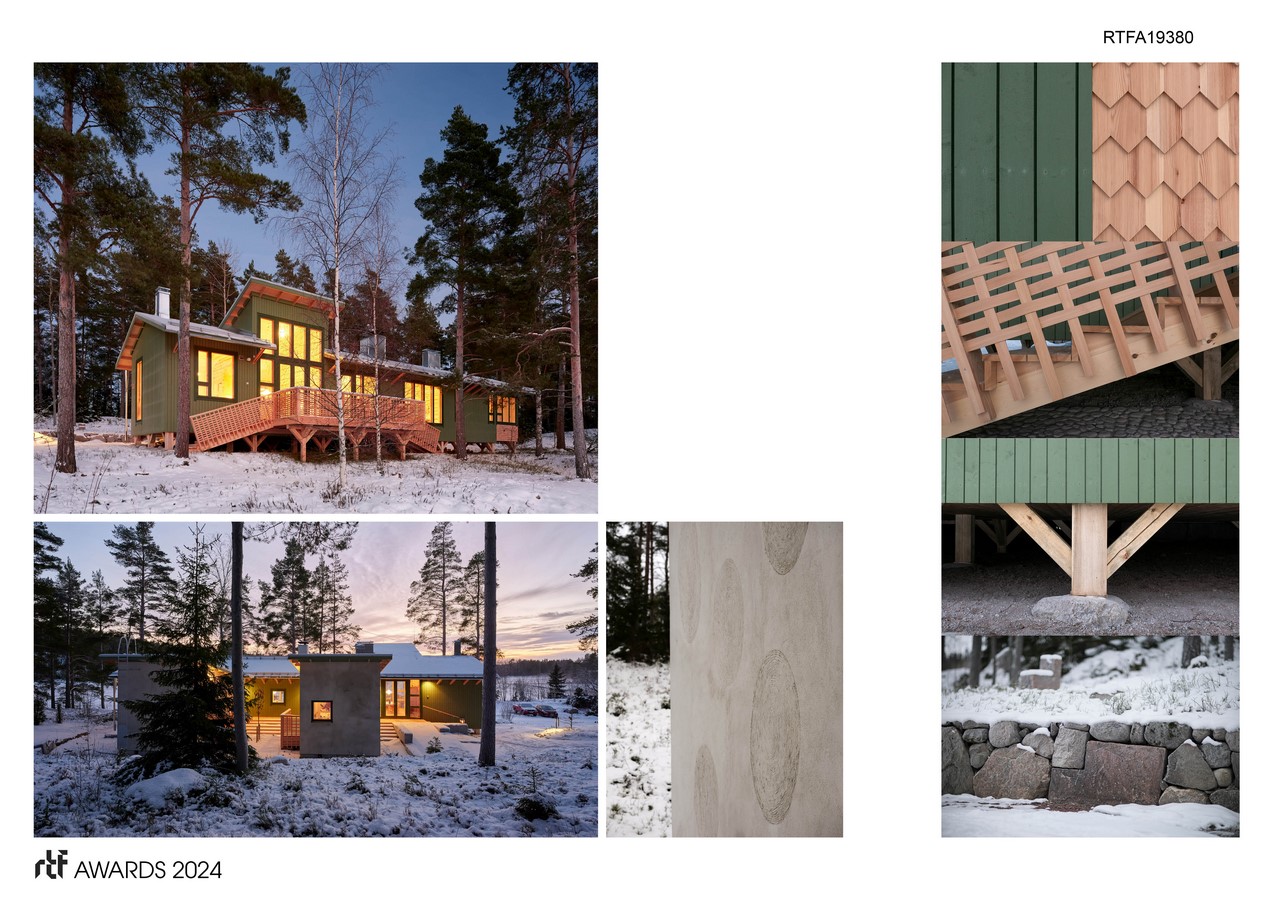
The spatial solutions are divided into a wooden part and a masonry part. The entrance and bathroom wings are made from massive, burnt clay blocks and the living part is built of aspen logs. Aspen contains a small amount of terpenes meaning that the building won’t have a strong smell. The wooden part has a gabled roof with the glazed high orangery space as an exception. Next to the bedroom there is a veranda without insulation. It creates a thin building skin between the interior and the exterior. Here you can ventilate your textiles, feel the presence of nature and listen to the wind and rain.

The fireplace is situated in the middle of the building creating a warm and energy efficient heart.
Every space has natural daylight with an individual framed view to the exterior. The openings to the forest are smaller while the views towards the fields are generous. An inner courtyard is created towards the forest with a rowan tree in the middle. Its intimate scale creates an outdoor room with the sky as its roof.
The building is lifted from the ground to keep the constructions ventilated.
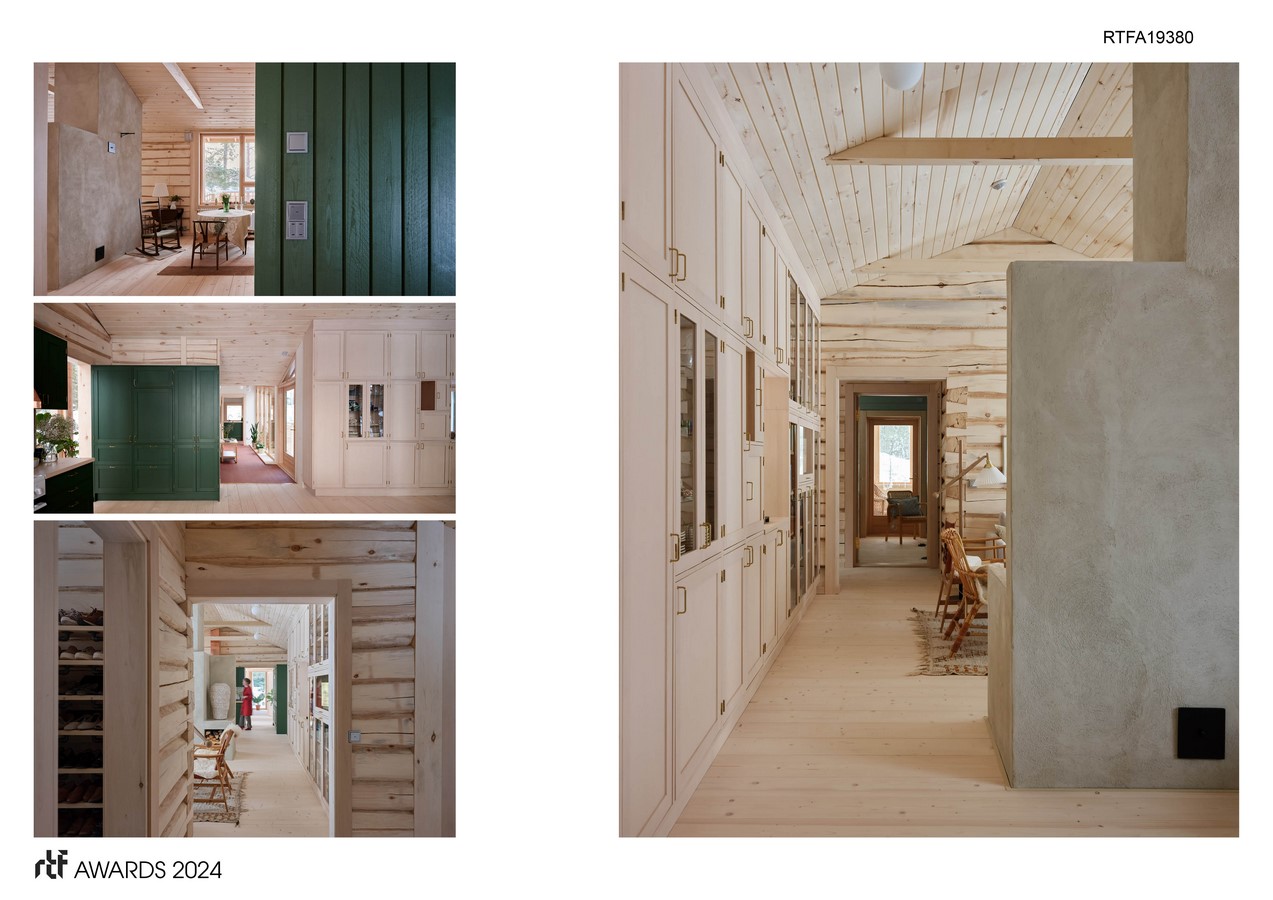
The handicraft in the construction marks the human memory of the execution. Special attention is paid to the detailing in the wooden railings, the shingle cladded walls, the work with natural stone and the storage furniture. A ceramic artist made a place specific piece of art in the plastering next to the main entrance.
The multisensory experience in the building is gentle. There is an absence of smell, and the acoustics of the building is soft, creating a smooth and warm atmosphere in the spaces. The bodily spatial interior experience is strong. At the lowest point you can touch the ceiling while the highest point is over four meters above your head. The warm materials and skillful handicraft invite to touch the surfaces.

The outer skin of the building is painted green blending into the pine forest. The interior in the log part is unpainted. As a jewelry box.

